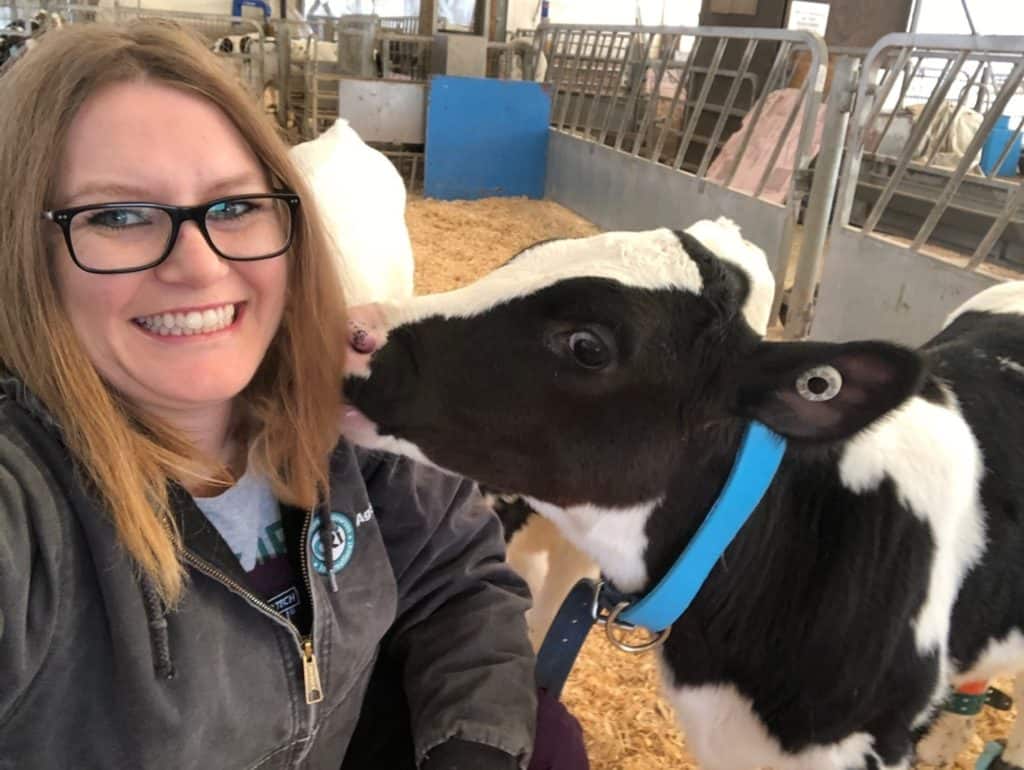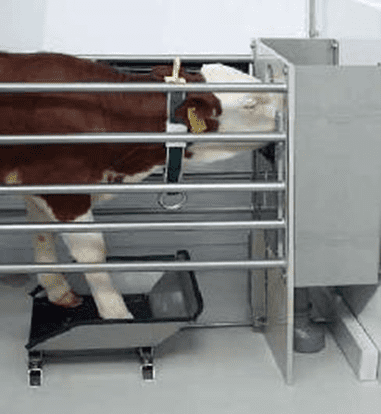Automated calf feeders are increasing in popularity with progressive dairy farmers who want to raise top-notch heifers by offering several benefits over manual feeding.
AUTOMATED CALF FEEDERS MAY RAISE BAR FOR TOP-NOTCH CALF RAISERS
*Post contributed by Melissa Cantor, University of Guelph and Joao Costa, University of Kentucky

While automated calf feeders are nothing new, recent research is increasing their popularity with progressive dairy farmers who want to raise top-notch heifers. The social environment provided by automated feeders promotes calf wellbeing and normal cognitive development, while collecting invaluable data on each calf. This article will briefly synthesize the benefits of automated feeding over manual feeding, as well as using data for calf management, and how data collected in early life might be related to cow performance.
Main benefits of automated calf feeders
One of the most obvious benefits to the automated calf feeder compared to manual feeding is that more milk can be fed to calves without increasing labor costs. There is a myriad of benefits to feeding higher planes of nutrition to calves preweaning. Briefly, these benefits include better growth which has been associated with an earlier target age at breeding, and more milk produced in the first lactation compared to calves fed a conventional amount of milk per day (e.g., 6 L/d or less). In fact, some researchers have attributed that higher milk in the first lactation was related to the enhanced mammary growth observed within the first 90 days of life in enhanced-fed calves.
The second reason an automated feeder holds appeal compared to manual feeding is consistency, and the ability to provide meals in a more natural feeding pattern. Provided the automated feeder is cleaned and calibrated according to manufacturer instructions, each calf will receive the correct quantity of milk solids, at the correct temperature at feeding. This is important as correct osmolality is essential to enable calves to thrive and avoid nutritional scours. Plus, the meal size of the automated feeder can be programmed to distribute milk throughout the day, which mimics how often a calf would drink from the cow. This is important since calves are more nutrient efficient when fed more frequent smaller meals rather than twice a day. (See the post on Feeding Plans for more details).
The third benefit to the automated feeder compared to manual feeding is individualizing weaning strategies. It is essential that calves offered accelerated milk feeding programs are weaned gradually across at least 2 weeks to avoid post-weaning growth slumps, and to provide time for the calf to consume grain to promote rumen development. We recommend step-down weaning to reduce the total milk offered by 50% across two weeks, and an additional 20% reduction across another week. This type of step-down weaning strategy was observed to promote calf grain consumption and provide the lower gut time to transition to solid feed. Thus, producers may prefer an automated calf feeder to feed more milk to calves without sacrificing performance due to the option to gradually transition calves to solid feed.
Data collection
Many producers like automated calf feeders because of the data provided on each individual calf. Automated feeders record feeding behaviors on each calf such as total daily milk intake, the average drinking speed, as well rewarded visits, and unrewarded visits. A rewarded visit indicates how often the calf has nutritive visits where milk was consumed, and the unrewarded visits indicates how often a calf has a non-nutritive visit where she is ineligible to retrieve milk. In a future blog, we will discuss the relationship that these feeding behaviors have with disease detection in calves.
The average unrewarded visits per calf is an important indicator of a calf’s hunger because researchers have observed that unrewarded visits increase when calves are offered less milk. Hungry calves occupying the feeder stall lowers the efficiency of an automated feeder. We suggest that the average number of unrewarded visits per calf preweaning can indicate how well your milk feeding strategy is satisfying the group. Calves offered 10 L/d or more milk (such as 40-Fit plan) should have minimal unrewarded visits (less than 2 a day) for the first three weeks on the feeder. Troubleshooting high unrewarded visits includes adjustments to the meal size, stocking density per nipple, or the age difference between the youngest and oldest calves in the pen should be investigated if unrewarded visits are high.
Better monitor weaning program success
Several additional tools are available for use with the autofeeders system. An optional automated grain feeder can record daily calf starter intake on all calves. This can be used to adjust weaning schedules to starter intake automatically. In addition, a partial weight scale can be installed inside the stall of the automated feeder. Weights are recorded during each rewarded visit to the feeder and algorithm summarizes each calf’s body weight information into daily weight gains or losses.

It is imperative to note that producers considering an automated calf feeder for their operation should be aware that stellar calf management must be in place prior to the adoption of this technology. Calf feeders cannot replace management! Producers should be on board with feeding at least 8 L/d, have excellent colostrum protocols and be willing to use a gradual weaning strategy to receive the maximum benefits of group housing. (See blog post – Considering a calf autofeeders system? Plan for success!)
In summary, automated milk feeders can be used to feed more milk to calves consistently to promote performance in early life without increasing labor costs. However, it is imperative to incorporate step-down weaning across several weeks to ensure this success in calves, which is easy to achieve with an automated milk feeder. We suggest that automated milk feeders are an excellent tool for top-notch producers to monitor their calf performance and behavior, but that no technology can replace regular care of their calves.
Comment with your thoughts or questions.
